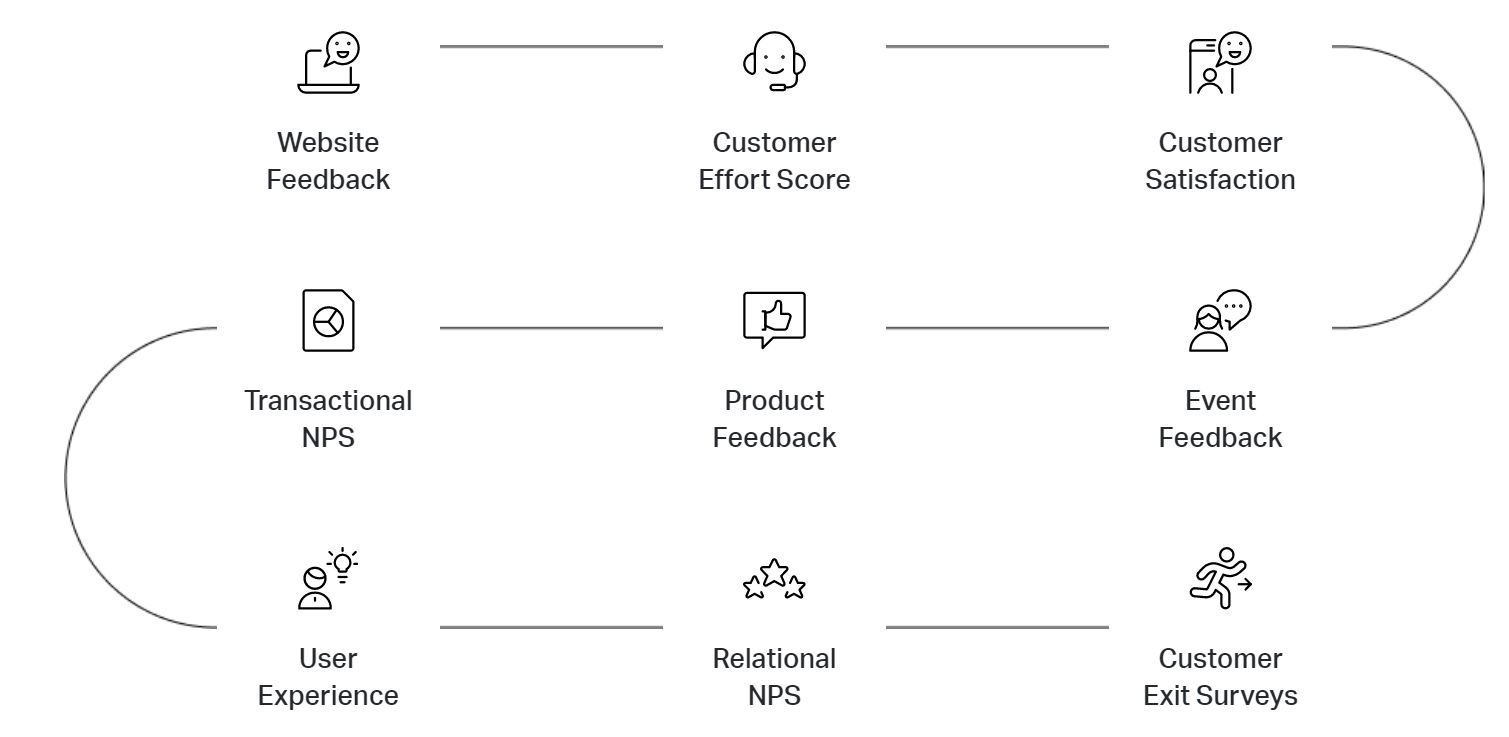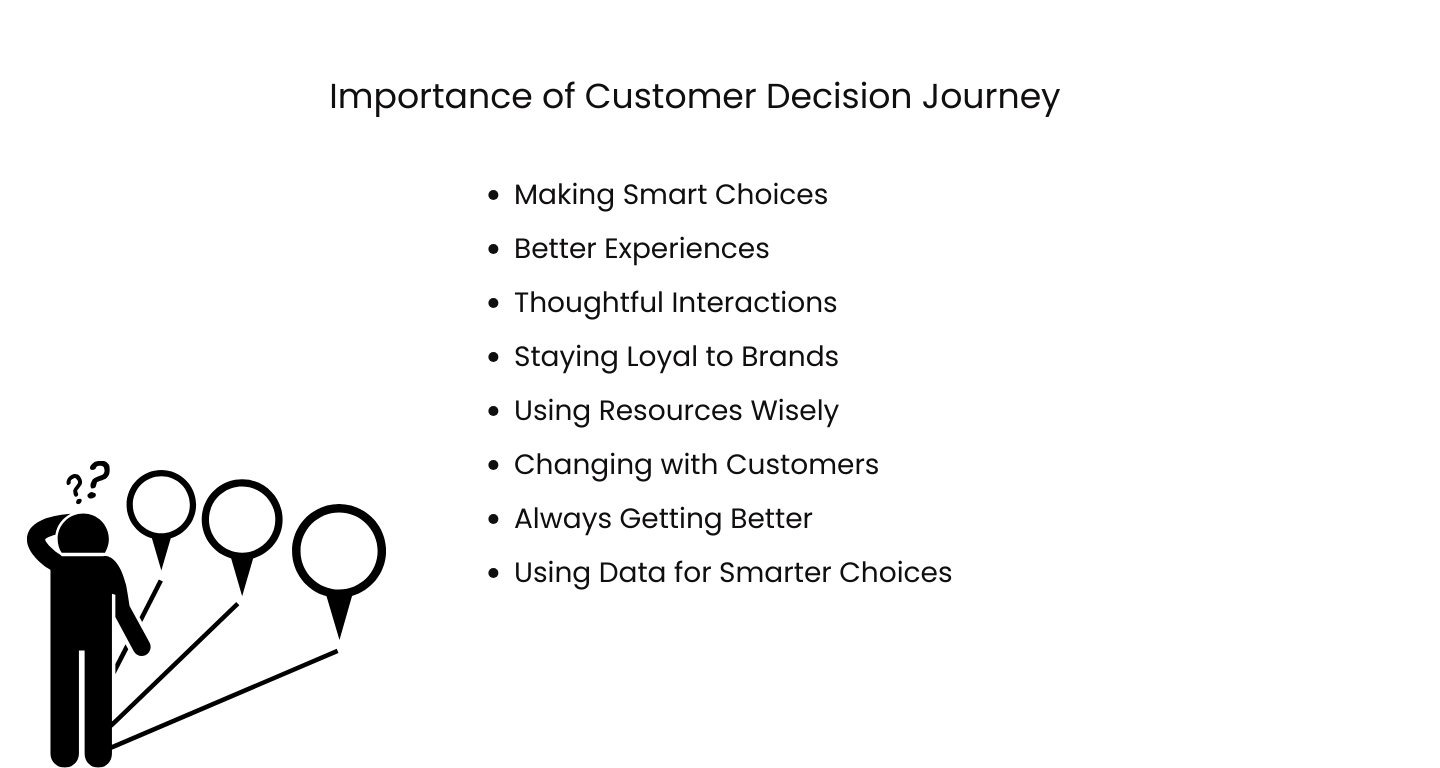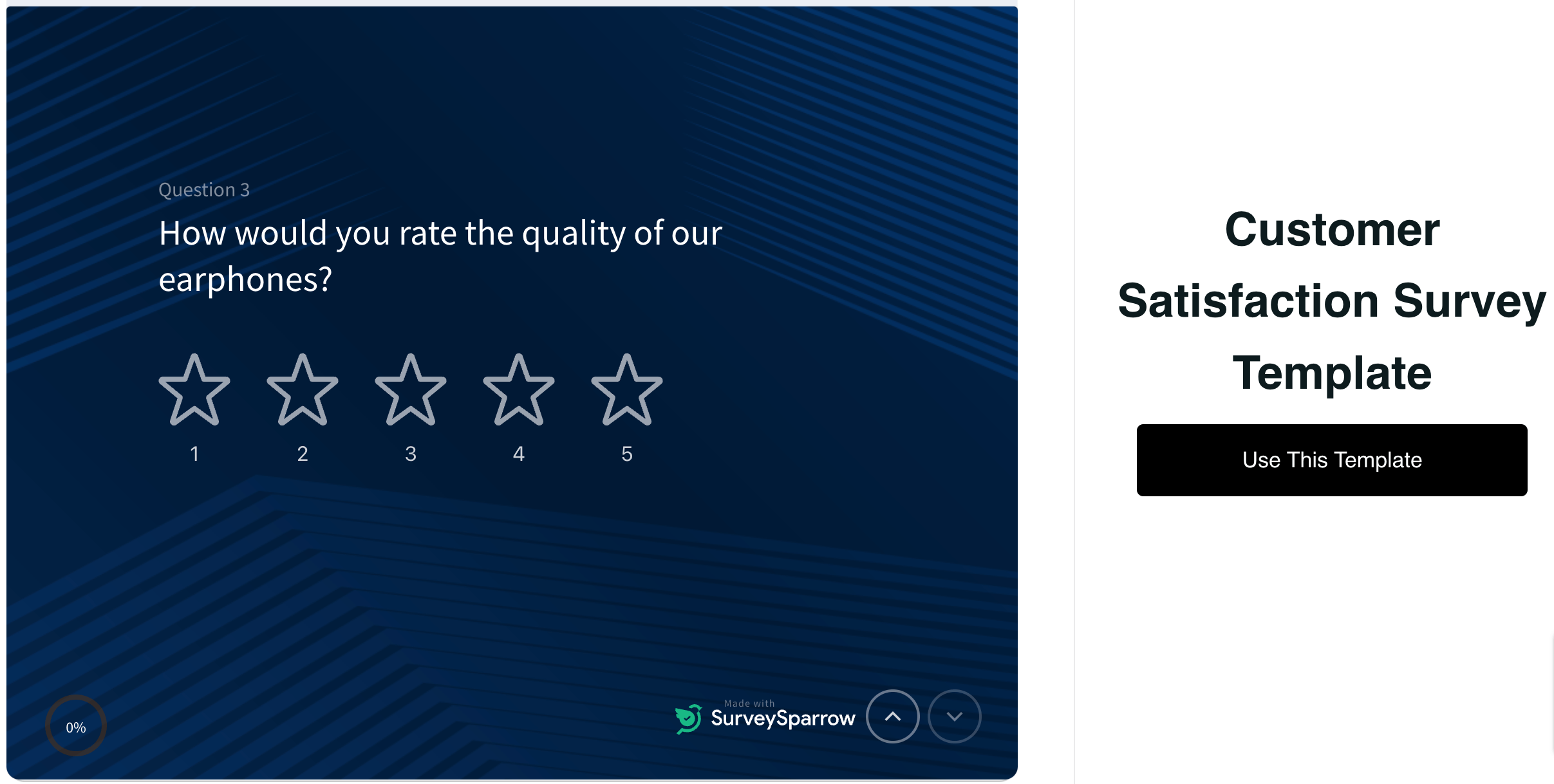Best Of
How To Understand The Customer Decision Journey ?
Article written by Fasna Savad
fasna
11 min read
24 November 2023

The most crucial thing in sales is the customer decision journey. Don’t let the world tell you otherwise!
Customers usually consider a lot before opting for your product. Sure, there are impulsive consumers. But most of the time, customers do a lot of research before stepping foot in your store.
Your role as personnel in the sales field is to influence customers in their decision-making journey at whichever touchpoints are necessary. It may be during their research phase or even after purchasing the product.
But what is this customer decision journey, and when does it start?
You might have a faint idea of the same by now, but let us demystify it for you!
What Is The Customer Decision Journey (CDJ)?
Simply put, the customer decision journey is the various stages a customer goes through before opting for a product or service.
The process starts when the customer becomes aware of the need and searches for different solutions. Then, they look for the available options and viable alternatives. Some don’t waste much time finding alternatives; instead, choose the favored option.
The exciting part about the customer journey is that it doesn’t finish with the purchase of the product.
The customer would analyze if the product they bought solved their problem or is worth the money and effort they put in.
If it’s a yes, they become loyal to the brand and go for it again. They either seek a replacement or another product if the answer is no.
What’s worse is that the post-purchase experience plays a crucial role in the customer decision journey. If they aren’t satisfied with your services, the customers might develop an aversion to your brand, or worse, trigger negative word of mouth.
Well, there are a million ways to ensure a customer has a positive experience. The easiest is to roll out surveys at different stages of the customer decision journey and analyze the responses.

Wondering which survey software to use? Try SurveySparrow for free:

Create conversational surveys with SurveySparrow
A personalized walkthrough by our experts. No strings attached!
What’s a Journey Map?
A journey map is like a visual story showing a customer’s steps when interacting with a business. It helps businesses understand and improve customer experience by highlighting highs and lows.
Starting from the initial interaction, the customer journey outlines the various stages a customer goes through, such as researching, purchasing, and using the product, while marking specific touchpoints along the way.
Customer journey maps help businesses understand what customers like and what bothers them. This guides decisions effectively. By figuring out essential moments and fixing any problems, businesses make the experience smoother and more personal. This continuous improvement ensures flexibility, making the decision journey a positive one.
Importance of Customer Decision Journey
It is like a guide to a business. Come to think of it, it’s a story that shows how businesses and customers can succeed together. Let’s try to understand why it is so vital.

- Making Smart Choices: The journey helps customers make good decisions, ensuring they are happy with their choices.
- Better Experiences: Businesses can make each interaction unique by knowing where customers are in their journey. This makes customers feel good about their experience.
- Thoughtful Interactions: Knowing where customers are in their decision-making helps businesses interact with them in a way that makes sense. This can influence their choices.
- Staying Loyal to Brands: A well-thought-out journey builds trust. Businesses that consistently give good experiences are likelier to have customers who stick around and tell others about them.
- Using Resources Wisely: Understanding the journey helps businesses use their time and money wisely. They focus on the important parts, like marketing and support, for the best results.
- Changing with Customers: The journey can change. Understanding this helps businesses adjust to customers’ needs, staying ahead in a constantly changing world.
- Always Getting Better: Watching the journey helps businesses learn. They can listen to what customers say, fix problems, and improve things over time.
- Using Data for Smarter Choices: The journey gives businesses important information. Using this data helps them make better decisions and plan for the future.
Best Practices to Navigate Customer Decision Journey
Everyone wants a lasting relationship with their customers. Right? But how do we achieve that?
1. Understand your customers: Start by owning your customers. What are their interests, needs, and preferences? The better you understand them, the smoother their journey will be.
2. Seamless omnichannel experience: Ensure you are consistent across all platforms. The customers should feel the same level of service and engagement whether on your website, social media, or in-store.
3. Personalization at every step: Use data to offer personalized recommendations, content, and support. This will make them feel valued.
4. Feedback loop for improvement: Listening to your customers is critical! Establish a feedback mechanism for that. Understand their experiences and learn from their responses.
5. Empower with information: Be clear and precise with the information that you provide. Moreover, this will help in better making confident customers.
5 Stages Of The Customer Decision Journey
According to McKinsey’s framework of CDJ, the process starts with a stimulus or a trigger that makes the customer aware of the need.
The need triggers the whole journey that may or may not culminate in purchasing the product. So, let’s take a closer look into the different stages of the customer decision-making journey:
The Trigger
As mentioned earlier, the trigger ignites the spark of need in the customer.
Melissa accidentally broke her phone. She examined it to see if she could repair it but discovered it was beyond repair. She concludes that she needs a new phone. This event can be considered the trigger that made the customer want a new product to satisfy her needs.
Initial Consideration of The Available Options
This is where the power of branding comes into play. The customer thinks about the most popular brands and starts searching for a product that fits their need and budget.
In Melissa’s case, she started considering the different models from Apple, Samsung, and OnePlus, as these are the brands that first came into her mind.
Detailed Evaluation
In the detailed evaluation stage, the customer considers options beyond popular brands. But this may not be true in every case. For example, impulsive customers don’t deeply research the viable options. Instead, they might settle with a famous brand and best-rated product.
Luckily, Melissa insists on deeply researching the specs offered by the various models. She identifies that she requires a phone with good camera quality and a long battery life. With this as the base condition, she starts to analyze the options in her hand. She also weighs the features offered against the price and sees if the product is worth the money.
The tricky thing about this stage is that the time taken to complete it varies with customers. If you can interact with the customers during this stage, you can easily influence them to speed up the process and direct them to the purchase stage as quickly as possible.
If Melissa decides to search online for the same, the brands’ online ads and marketing tactics will speed up the process. On the other hand, if she decides to stop by a physical store, the sales representative can influence her choices and show her a better option than the one she had in mind.
The Purchase/Buying
Once the customer has decided to purchase the product or service, This is the action time for customers, and many times, companies acknowledge this stage of CDJ alone. Unfortunately, this isn’t the right way.
Sure, this stage is where the customer takes some quantifiable action, but the process leading to this buying stage is quite important. How well the company managed to market its products, how well its representatives behaved when the customer reached out, and how smooth the purchasing process was – all these matters!
Returning to Melissa, She narrowed it down to a phone model, says Sample XYZ. She purchased it via the brand’s online store, and the delivery reached the next day.
Until she receives her product, Melissa will have many questions, and she will continuously reassess her choice. Thus, in her case, the buying stage doesn’t end with the payment but only when the product reaches home. During this time, she is totally in control of whether to cancel or accept the product order.
The buying stage doesn’t end with the payment. It may work for the company, but for customers, it ends when they can lay their hands on the product or when they can use it.
Post-Purchase Experience
The post-purchase experience is another crucial step in the customer decision journey. Ever since they have the product, they constantly analyze it to see if they have made the right choice. Your role as a company is to ensure that the customer is satisfied with the product and that your representative maintains excellent relationships with them.
During this stage, the customer judges your product and promotes or de-promotes it based on their experience. If they are delighted with the product, they suggest it to their friends, peers, or relatives.
You can send out customer satisfaction surveys to know if the customer is truly excited by your product. You aim to ensure the customer gets nothing less than a wow experience. Then, with the results of the customer satisfaction survey in hand, you can decide what to do to ensure the customer is truly satisfied with your product.
Try this free customer satisfaction survey template from SurveySparrow: 
Now, in the case of Melisssa, she didn’t like the phone she purchased. She got a phone with better camera quality and long battery life, but the storage capacity wasn’t up to the mark. She chose the model in the same series with higher storage capacity. The brand representative agreed that they would help her with that. She received the new set, and now she is all happy!
Had the company rejected her request, it would have triggered a negative word-of-mouth effect. But as the representative at the side was so understanding, Melissa was even more impressed with the brand and the product and decided to recommend the same to her friends!
Wrapping Up…
Not all customers are like Melissa. In fact, every customer is different, and that’s why it’s important to make sure that you understand the customer decision journey that leads to the purchase of the product.
When you are thorough with this, you can use the various touchpoints where you contact the customer. In these instances, you can easily influence the customer to consider your product seriously.
Before signing off, let us remind you:
There is a thin line between influencing your customers and asserting them to buy your product. Your company should figure out what your tone would be when you interact with the customers.
Less of persuasion, more of assistance. Let that be the goal!
Ciao!
And, while at it, why not give SurveySparrow a try? It’s free!

Create conversational surveys with SurveySparrow
A personalized walkthrough by our experts. No strings attached!
Start 14 Days free trial

Fasna Savad
Full-time introvert with a dash of spontaneity and at times, A writer!
Related Articles

Alternative
8 Best Ninja Forms Alternatives for Powerful Online Form Creation
9 MINUTES
29 August 2023

Best Of
How to Easily Calculate Confidence Intervals for Your Study
9 MINUTES
16 January 2022
Best Of
11 Best Applicant Tracking System Software to Look Up in 2023
11 MINUTES
18 May 2020

Best Of
Top Classroom Poll Tools For Student Engagement
11 MINUTES
18 September 2024
